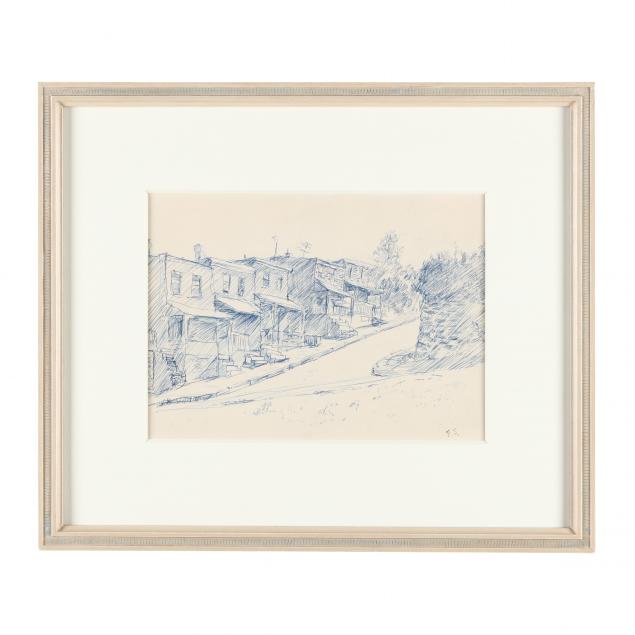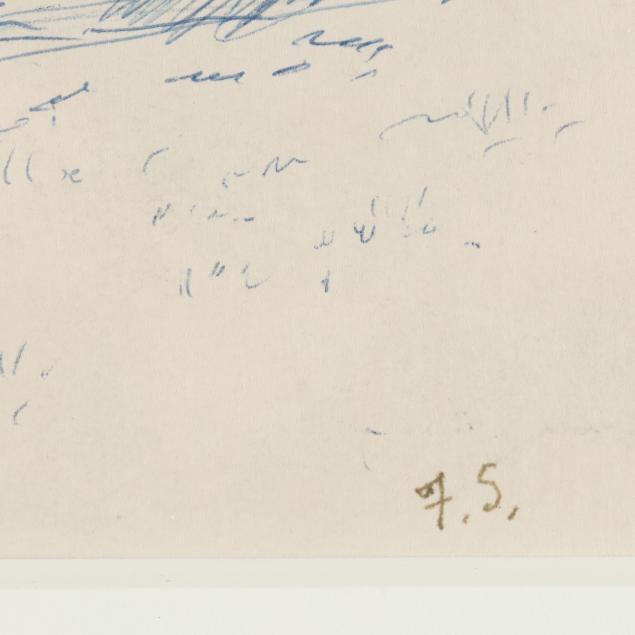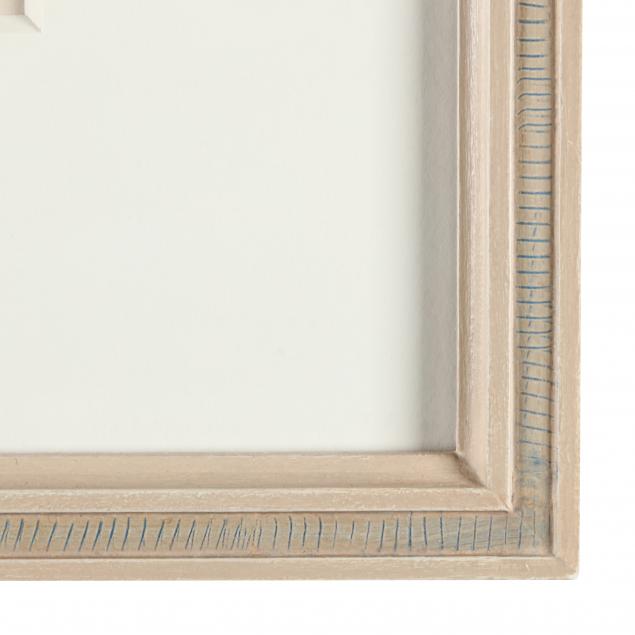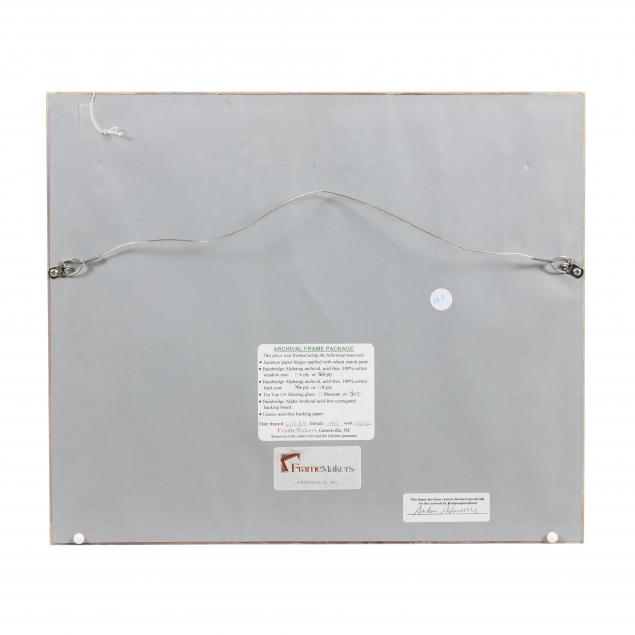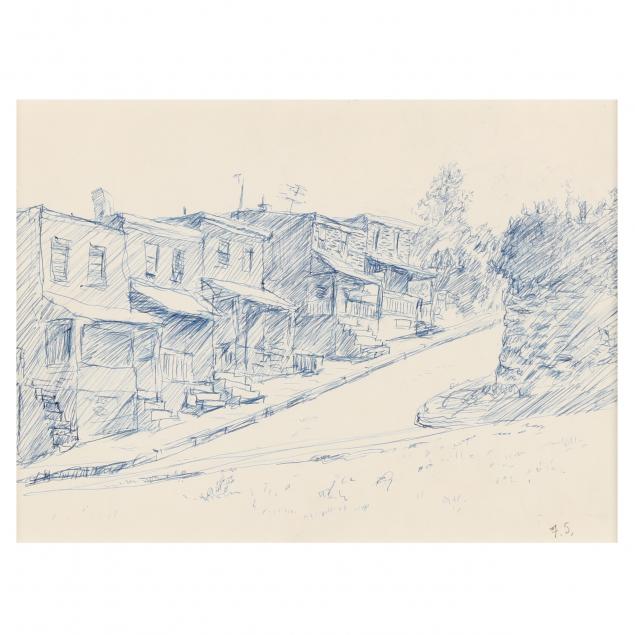
Lot 3202
Francis Speight (American, 1896-1989), Rudolph's Row
Explore more items like this one.
Visit our Fine Art Department Fine Art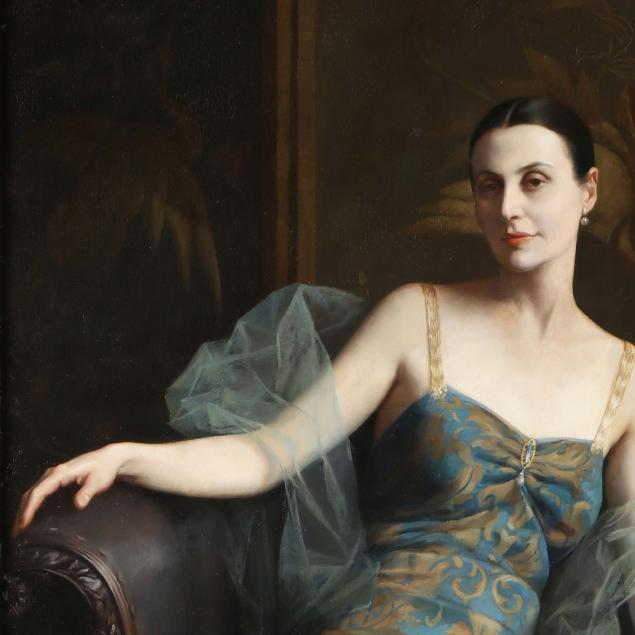
Lot Details & Additional Photographs
Sight size 8 1/4 x 11 1/4 in.; Frame dimensions 15 3/4 x 18 1/2 in.
From a Private Collection, Eastern North Carolina
From the Estate of the late David Frost Sellin of Philadelphia, Pennsylvania and Washington, D.C.
Dr. Sellin was a prominent art historian and curator. He held positions and fellowships at the Philadelphia Museum of Art, Pennsylvania Academy of the Fine Arts, the Smithsonian Museum of American Art and the U.S. Capitol.
Francis Speight was born in rural Bertie County, North Carolina in 1896. He began his art studies with Ida Poteat at Meredith College in Raleigh, North Carolina, followed by a brief period at the Corcoran School of Art in Washington, D.C. While at the Corcoran, he was introduced to the work of Daniel Garber. Speight was so impressed with Garber’s American impressionist paintings that he moved to Philadelphia to study with the artist at the Pennsylvania Academy of the Fine Arts.
In 1925, Speight graduated from the academy but stayed as a painting and drawing instructor until 1961. This period of his work is characterized by tender scenes of the blue collar industrial towns surrounding Philadelphia. Bathed in dramatic rays of sun, or soft shadows, these paintings and their compositions seem to sway and dance across the canvas.
The North Carolina Museum of Art mounted a retrospective of Speight’s work in 1961, marking the artist’s return to his home state. He and his wife, Sarah Blakeslee, moved to Greenville, North Carolina where he taught art at East Carolina University. This new position allowed him greater time and freedom to paint. Both he and Sarah would travel and paint across North Carolina, returning to Pennsylvania and the PAFA to teach summer classes.
Francis Speight exhibited frequently throughout his lifetime, with solo exhibitions at Butler Institute of American Art, Youngstown, OH; Delgado Museum, New Orleans; Corcoran Gallery of Art, Washington, D.C.; Pennsylvania Academy of the Fine Arts, Philadelphia; Greenville Museum of Art, Greenville, NC; North Carolina Museum of Art, Raleigh; and more. His paintings are in numerous prominent private and public collections, including The Mint Museum of Art, Charlotte, NC; Ackland Art Museum, Chapel Hill, NC; Gibbes Museum of Art, Charleston, SC; National Academy of Design, New York; The Johnson Collection, Spartanburg, SC; and many more.
Rudolph's Row refers to a row of houses built by Sebastian A. Rudolph to house employees at his Ashland Paper Mill in Lower Merion Township, Pennsylvania. Many of these homes were demolished in the 1950s with the construction of the Schuykill Expressway. An open area along the river bank between Rudolph's Row and the bridge was a popular site for prize fights, vaudeville performances, carnivals and travelers' encampments.
Good estate condition; not examined out of the frame.
